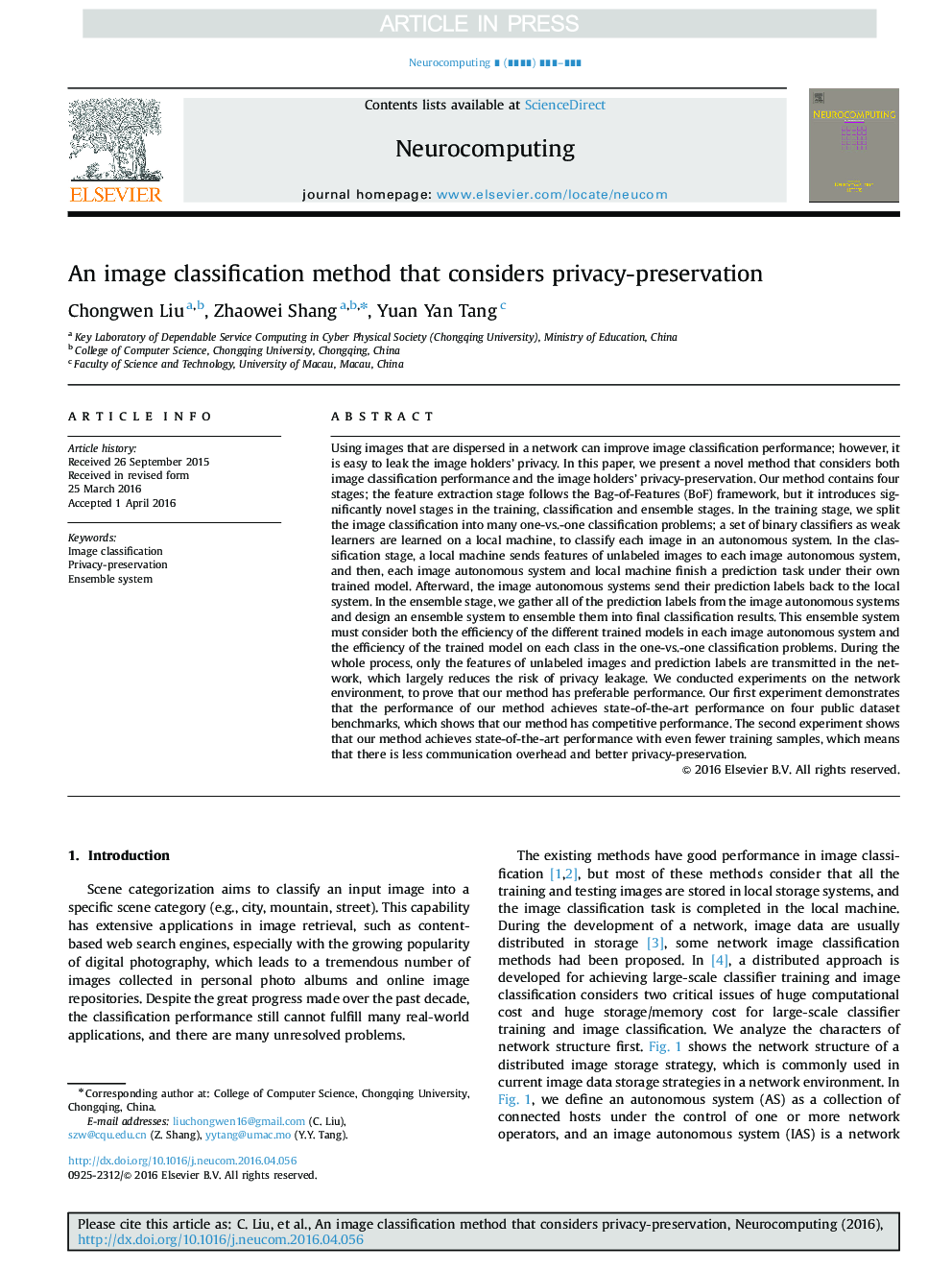| Article ID | Journal | Published Year | Pages | File Type |
|---|---|---|---|---|
| 4948605 | Neurocomputing | 2016 | 19 Pages |
Abstract
Using images that are dispersed in a network can improve image classification performance; however, it is easy to leak the image holders' privacy. In this paper, we present a novel method that considers both image classification performance and the image holders' privacy-preservation. Our method contains four stages; the feature extraction stage follows the Bag-of-Features (BoF) framework, but it introduces significantly novel stages in the training, classification and ensemble stages. In the training stage, we split the image classification into many one-vs.-one classification problems; a set of binary classifiers as weak learners are learned on a local machine, to classify each image in an autonomous system. In the classification stage, a local machine sends features of unlabeled images to each image autonomous system, and then, each image autonomous system and local machine finish a prediction task under their own trained model. Afterward, the image autonomous systems send their prediction labels back to the local system. In the ensemble stage, we gather all of the prediction labels from the image autonomous systems and design an ensemble system to ensemble them into final classification results. This ensemble system must consider both the efficiency of the different trained models in each image autonomous system and the efficiency of the trained model on each class in the one-vs.-one classification problems. During the whole process, only the features of unlabeled images and prediction labels are transmitted in the network, which largely reduces the risk of privacy leakage. We conducted experiments on the network environment, to prove that our method has preferable performance. Our first experiment demonstrates that the performance of our method achieves state-of-the-art performance on four public dataset benchmarks, which shows that our method has competitive performance. The second experiment shows that our method achieves state-of-the-art performance with even fewer training samples, which means that there is less communication overhead and better privacy-preservation.
Related Topics
Physical Sciences and Engineering
Computer Science
Artificial Intelligence
Authors
Chongwen Liu, Zhaowei Shang, Yuan Yan Tang,
